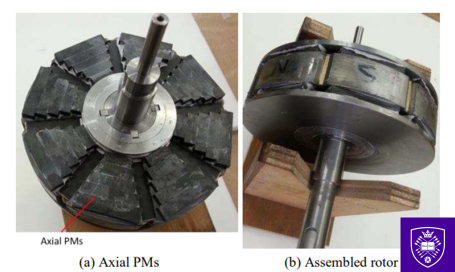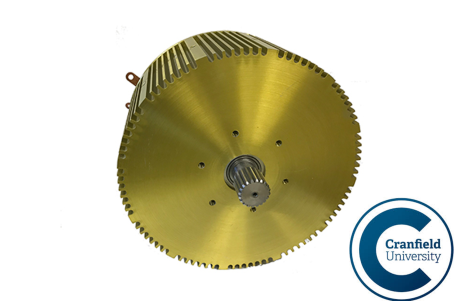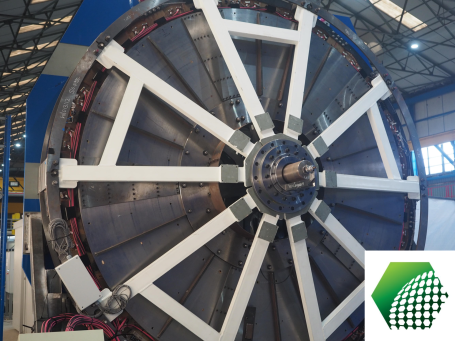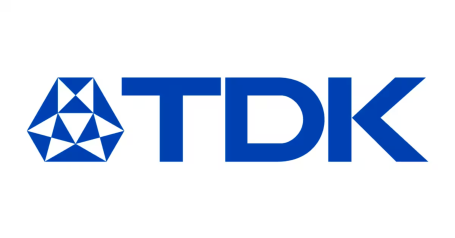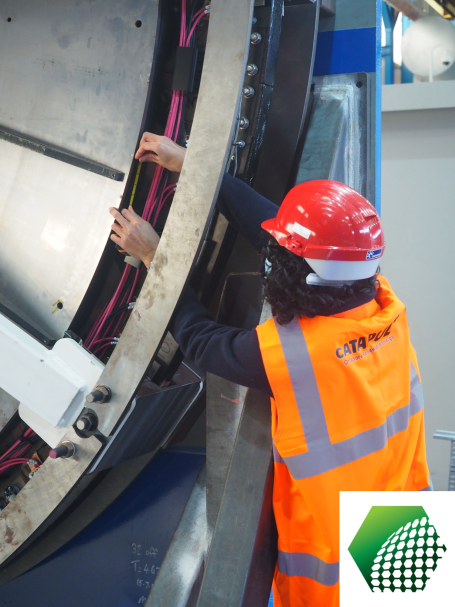Ferrite Magnets in Application
Scalable, Low Cost, and Easily Manufactured from Waste
Strontium ferrite magnets use raw materials (strontium carbonate and ferric oxide, in other words “rust”) that are more abundant and less expensive than materials used in rare earth permanent magnet (REPM) motors, significantly reducing material costs in motor manufacture. In transitioning to alternative motors new equipment and manufacturing adjustments will be required, but these costs can be offset by the lower ongoing production expenses. The much lower environmental impact of sourcing the materials for ferrite has the added advantage in compliance and traceability.
The security of supply and lower cost advantages of ferrite magnets can be further enhanced if incorporated into a circular economy context. The chief ingredient in ferrite magnet manufacture is iron oxide which is readily available and abundant from low grade steel wastes, for example.
The minor, yet essential, secondary component in ferrite magnet manufacture is barium carbonate or strontium carbonate. The latter being preferred for higher performance applications such as in motors and generators.
Magnets Used in Cars
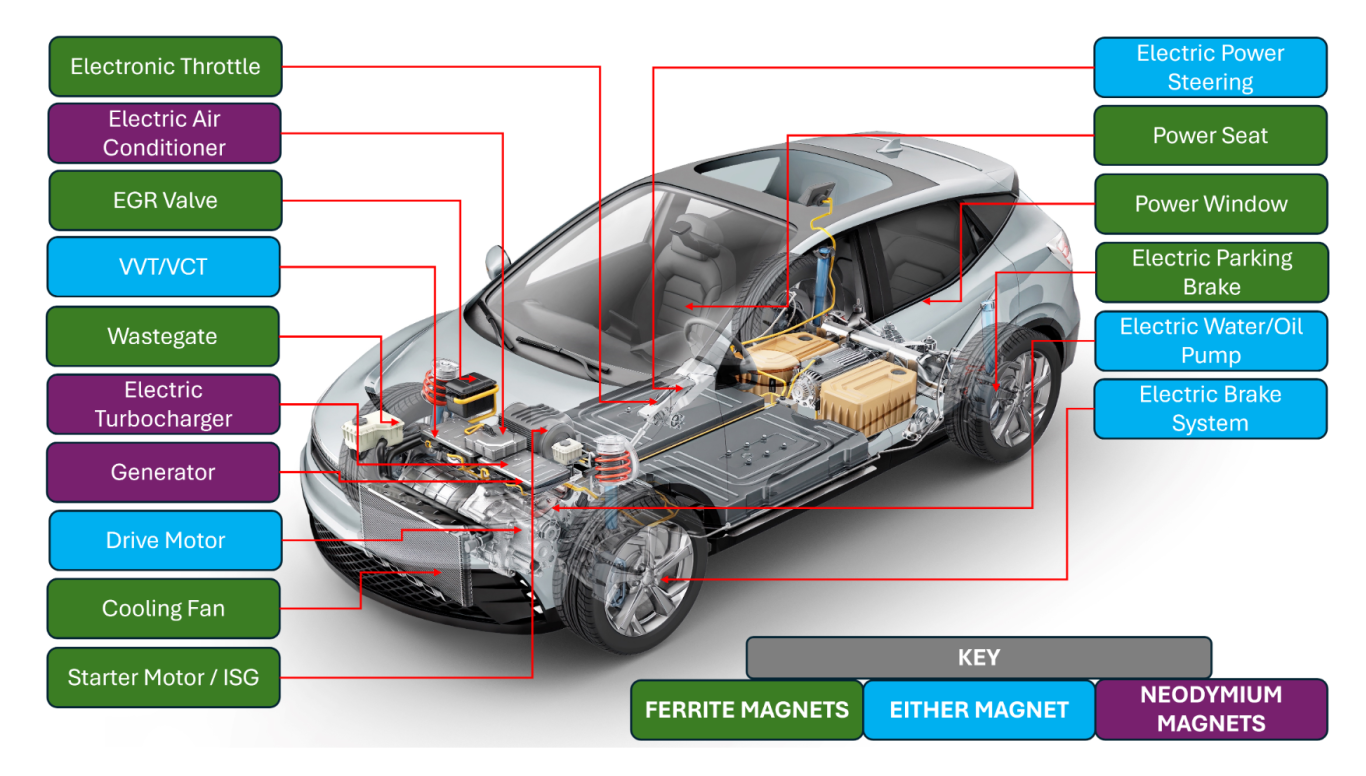
Changes in Magnet Strength Through the Past Century
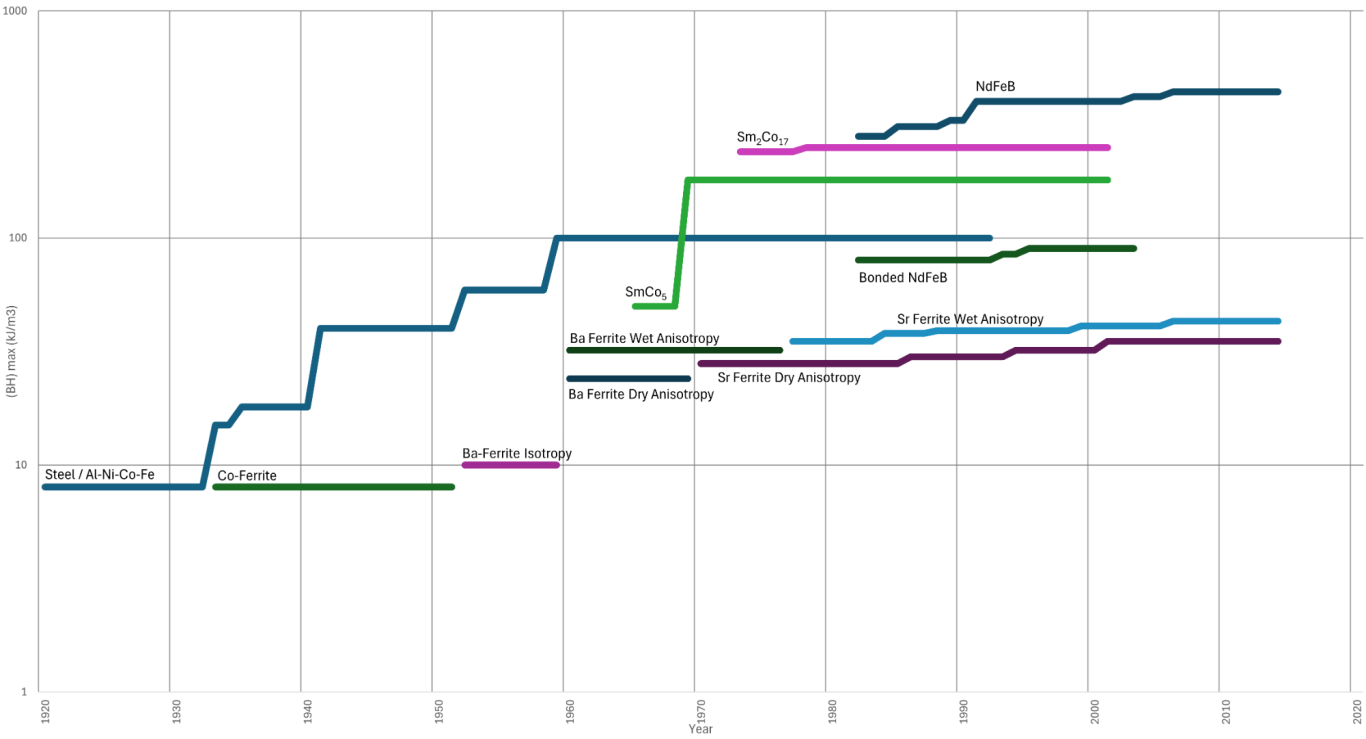
Market Analysis

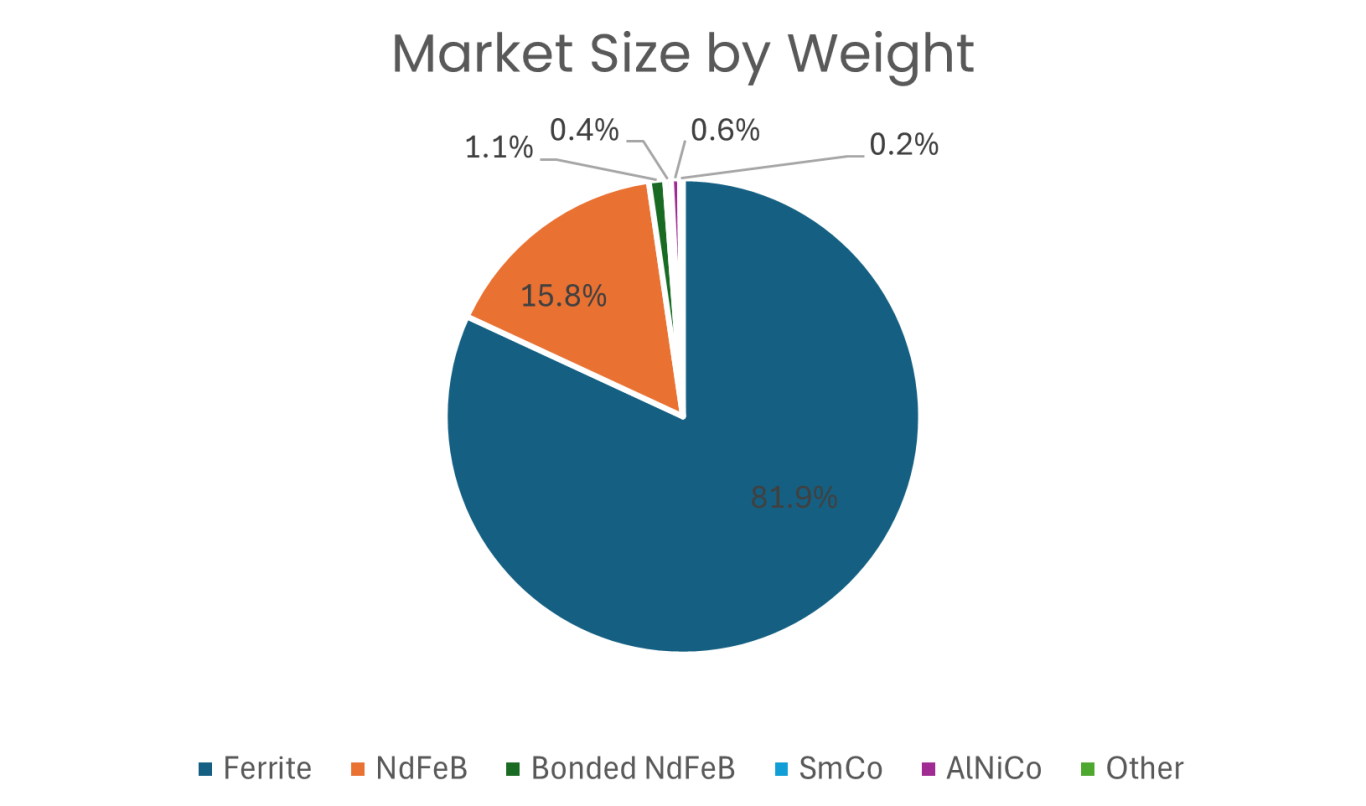
Croat JJ, Ormerod J, editors. Modern permanent magnets. Woodhead Publishing; 2022 Jan 27.
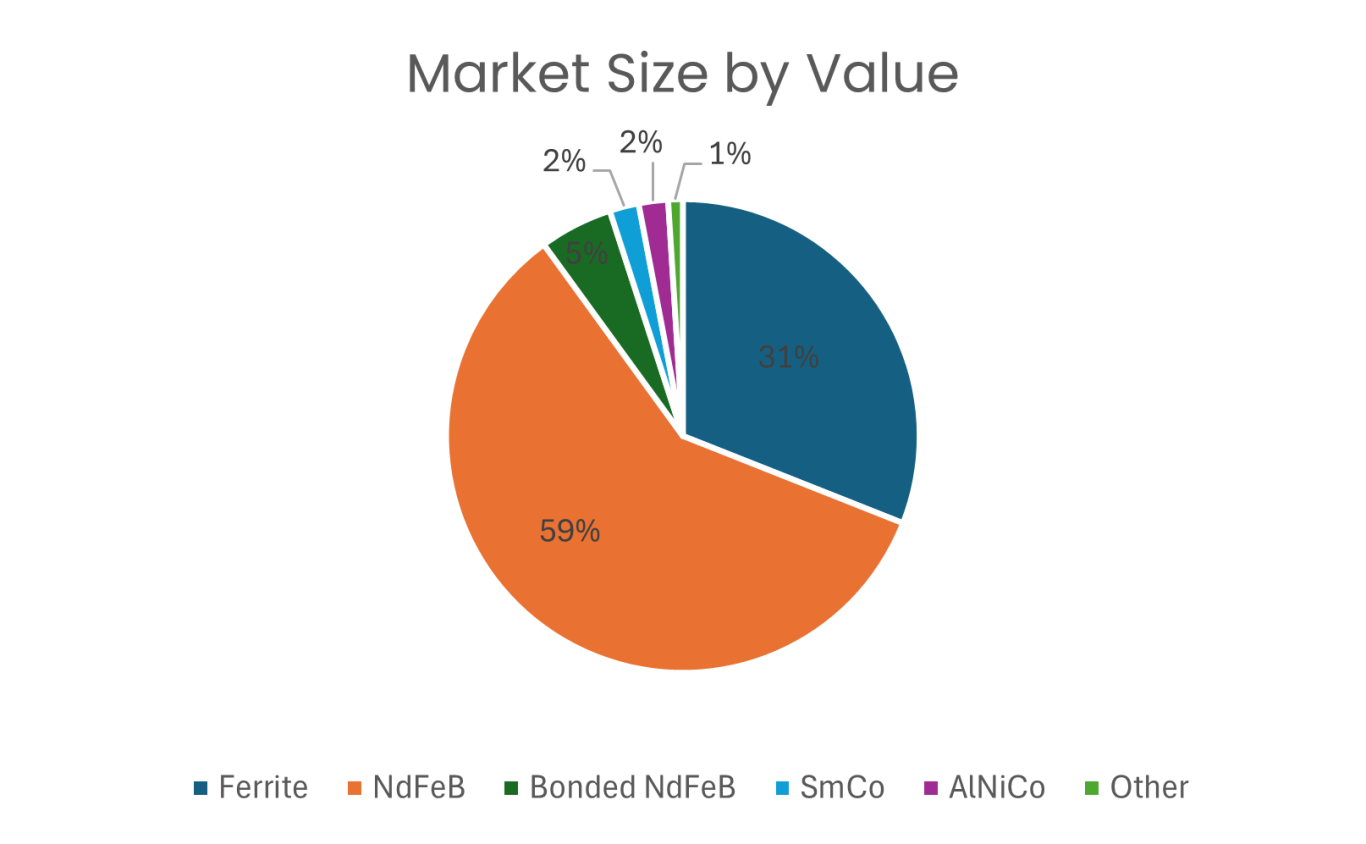
Croat JJ, Ormerod J, editors. Modern permanent magnets. Woodhead Publishing; 2022 Jan 27.

Croat JJ, Ormerod J, editors. Modern permanent magnets. Woodhead Publishing; 2022 Jan 27.
Videos about Ferrites
Relevant Research
- High Performance Ferrite Permanent Magnet Brushless Machines
- Low-cost high-performance ferrite permanent magnet machines in EV applications: A comprehensive review
- Croat JJ, Ormerod J, editors. Modern permanent magnets. Woodhead Publishing; 2022 Jan 27.
- Strontium Minerals as Critical Raw Materials - Market Dynamics, Processing Techniques and Future Challenges
We need your consent to load the translations
We use a third-party service to translate the website content that may collect data about your activity. Please review the details in the privacy policy and accept the service to view the translations.

